
Bayerische Motoren Werke AG, abbreviated as BMW, is a German multinational manufacturer of luxury vehicles and motorcycles headquartered in Munich, Bavaria, Germany. The company was founded in 1916 as a manufacturer of aircraft engines, which it produced from 1917 to 1918 and again from 1933 to 1945.
Innocenti was an Italian machinery works, originally established by Ferdinando Innocenti in 1920. Over the years, they produced Lambretta scooters as well as a range of automobiles, mainly of British Leyland origins. The brand was retired in 1996, six years after being acquired by Fiat.

The BMW 8 Series is a range of grand tourer coupes and convertibles produced by BMW.

The BMW New Class was a line of sedans and coupes produced by German automaker BMW between 1962 and 1972. These models ensured BMW's solvency after the company's financial crisis of the 1950s and established the identity of BMW automobiles as sports sedans.
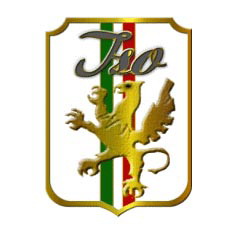
ISO Rivolta is an Italian car and motorbike manufacturer active in the motor vehicle sector since 1938. Over the years, the company has taken various names, including Isothermos, Iso Autoveicoli Spa in 1952, Iso Rivolta in 1962, Iso Motors in 1973 and, in 2017, a return to ISO Rivolta.
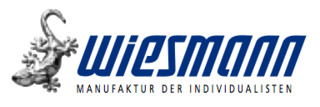
Wiesmann GmbH is a German automobile manufacturer that specializes in hand-built custom convertibles and coupes. Brothers Martin Wiesmann and Friedhelm Wiesmann founded the company in 1988 which has its headquarters located in Dülmen. The business was temporarily closed in May 2014, and following a buyout by London-based investor Roheen Berry who took over as CEO, it is set to return with a new model, powered by a BMW M division-sourced V8 engine. The relaunch of the Wiesmann brand has more than one model, including an electric vehicle, in the pipeline and the pre-development phase of the car has been completed. A teaser video of the brand's rebirth, posted on their website, tells viewers to “expect the unexpected”.

Goggomobil was a series of microcars produced by Hans Glas GmbH in the Bavarian town Dingolfing between 1955 and 1969.

Dingolfing is a town in southern Bavaria, Germany. It is the seat of the Landkreis (district) Dingolfing-Landau. Dingolfing is home of a BMW assembly plant.

The official founding date of the German motor vehicle manufacturer BMW is 7 March 1916, when an aircraft producer called Bayerische Flugzeugwerke was established. This company was renamed to Bayerische Motoren Werke (BMW) in 1922. However, the BMW name dates back to 1917, when Rapp Motorenwerke changed its name to Bayerische Motoren Werke. BMW's first product was a straight-six aircraft engine called the BMW IIIa. Following the end of World War I, BMW remained in business by producing motorcycle engines, farm equipment, household items and railway brakes. The company produced its first motorcycle, the BMW R32, in 1923.

The BMW N63 is a twin-turbocharged V8 petrol engine which has been in production from 2008 to present. The N63 is the world's first production car engine to use a "hot-vee" layout, with the turbochargers located inside the "V" of the engine. It is also BMW's first turbocharged petrol V8 engine. The engine has been widely noted for its mechanical issues, undergoing several recalls.

The Rolls-Royce–Bentley L-series V8 engine is an engine introduced in 1959. Built in Crewe, it was used on most Rolls-Royce and Bentley automobiles in the four decades after its introduction and was used in the Bentley Mulsanne until 2020.

Buckle Motors Pty Ltd is an Australian car dealership chain and former manufacturer that produced the famous Goggomobil Dart. Currently, under the name Bill Buckle Auto Group, the company sells Toyota, Subaru and Volkswagen vehicles.

The Glas 1700 is a middle class four door saloon produced by Hans Glas GmbH at Dingolfing. The prototype was first presented in September 1963 at the Frankfurt Motor Show. Later versions of the coupé and cabriolet bodied Glas GT were also powered, in some cases, by the same engine as the saloon. The saloon was produced between August 1964 and December 1967, but the manufacturer never had the investment capital sufficiently to expand production capability and the model was discontinued after the by now badly indebted manufacturer was acquired by BMW.
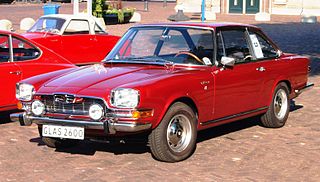
The Glas V8 is a V8-engined coupé produced by Hans Glas GmbH at Dingolfing. The car was first presented in September 1965 at the Frankfurt Motor Show, where it became nicknamed the "Glaserati" because of its Frua design, which shared many themes with contemporary Maseratis.

The Glas GT is a sports coupé produced by Hans Glas GmbH at Dingolfing. The car was first presented as the Glas 1300 GT in September 1963 at the Frankfurt Motor Show, with volume production starting in March 1964. The much rarer cabriolet version appeared in May 1965 and a larger engined 1700 GT in May 1965.

The Glas Isar is a small two door four seater car produced by Hans Glas GmbH at their Dingolfing plant. The car was first presented as the Goggomobil T600 in September 1957 at the Frankfurt Motor Show, with volume production starting in August 1958.
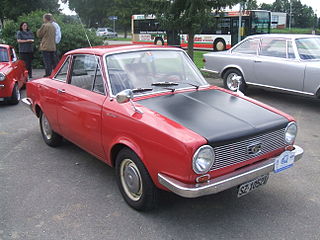
The Glas 1004 is a small two-door, four-seater automobile produced by Hans Glas GmbH at Dingolfing. It was first exhibited in public, in coupé form, at the Frankfurt Motor Show in September 1961. Volume production of the 1004 coupé started in May 1962, and in January 1963 saloon/sedan and cabriolet versions joined the range along with the more powerful Glas 1204. September 1965 saw a yet more powerful variant, the Glas 1304. In September 1966, a fastback Kombilimousine (estate) was added. The 04s were produced at least until December 1967, and new cars were listed for sale through much of 1968.

The second-generation of the BMW 8 Series consists of the BMW G14, BMW G15 grand tourers and BMW G16 executive cars (E). The G14/G15/G16 generation has been in production since 2018, and is often collectively referred to as the G15.
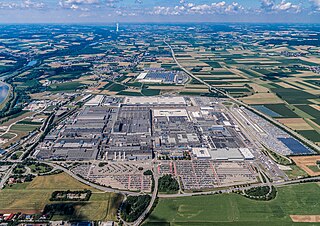
The BMW Group Plant Dingolfing is a network of BMW plants in Dingolfing, Dingolfing-Landau, Lower Bavaria, Germany with a total area of around 280 hectares.

BMW Manufacturing (Thailand) Co., Ltd. is an automobile manufacturing company based Rayong, in the Rayong Province of eastern Thailand and a subsidiary of BMW Group Thailand.

























